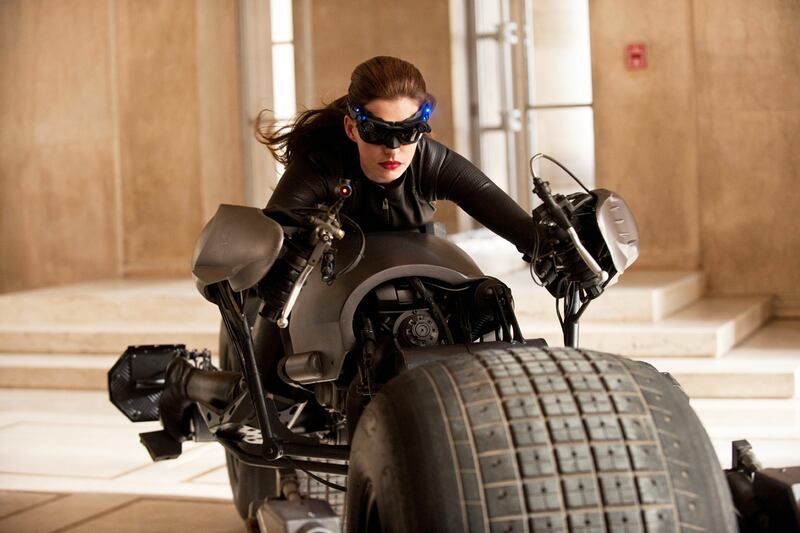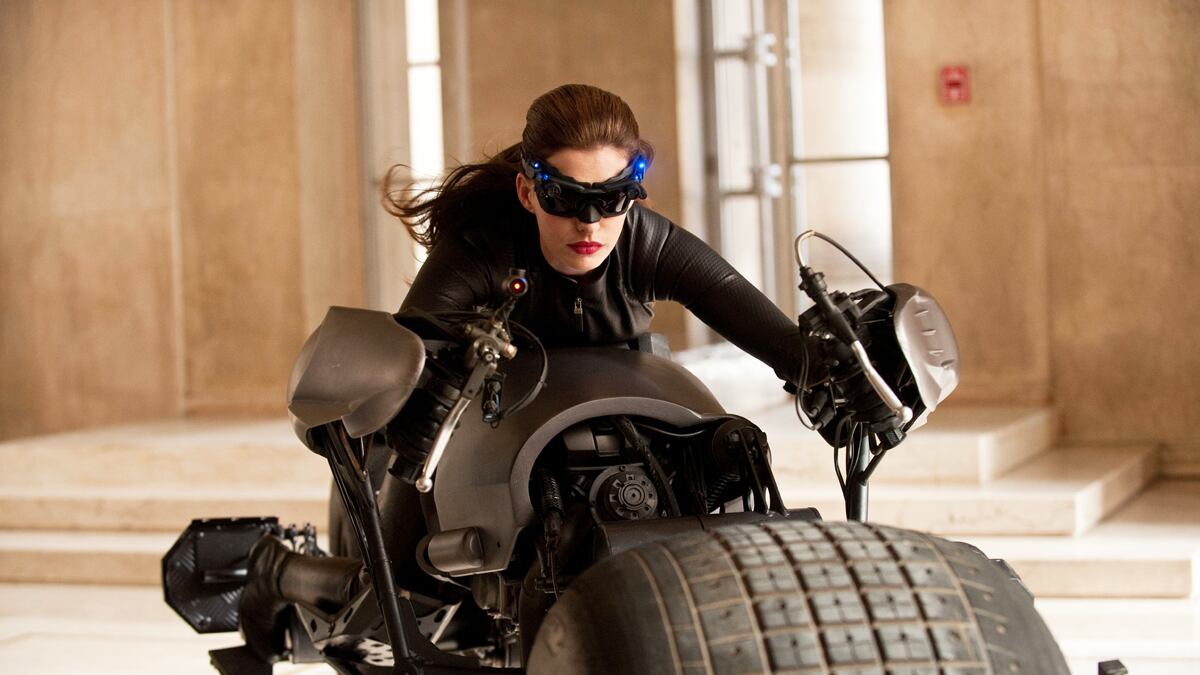As Hollywood enters the final two months of the year, with awards season on the horizon, there’s something missing from the crop of Oscar hopefuls scheduled to campaign at private dinner parties and screenings in New York and Los Angeles. Where are the women?

This isn’t a new criticism. Strong male roles have always dominated the male-centered movie industry. But this year, the gap between actors and actresses is perhaps as wide as it has ever been. Even the No. 1 blockbuster of the 2012 so far, The Avengers, treated its lone woman superhero, the Black Widow, as an afterthought. The actress who plays her, Scarlett Johansson, hasn’t headlined her own movie since 2007’s The Nanny Diaries.
On the other hand, there are already enough strong male performances to book several Academy Awards ceremonies. Among the top of that list are Daniel Day-Lewis as the 16th president in Steven Spielberg’s Lincoln, Joaquin Phoenix as a scenery-chewing war veteran in The Master, Denzel Washington’s addict pilot in Flight, and Bill Murray as another president, Franklin D. Roosevelt, in Hyde Park on Hudson. Anthony Hopkins is terrifically spooky in Hitchcock. Earlier this year, Richard Gere received plenty of kudos for his shady CEO in Arbitrage. Ben Affleck is the CIA agent who makes Argo fly. In The Sessions, John Hawkes delivers his best performance yet as a virgin with polio. The same goes for Jake Gyllenhaal, in the cop drama End of Watch, and Bradley Cooper, as a bipolar but lovable nut in David O. Russell’s Silver Linings Playbook. And those are just the best great performances.
Not all these movies are out in theaters yet, but they’ve been screened early to the press, and the buzz is loud and clear. Among the female performances, only one name stands out: Jennifer Lawrence. In Silver Linings Playbook, playing the oddball girl next door, she gives the kind of wonderful performance that’s already made her the frontrunner to this year’s Oscar race. At only 22, Lawrence has become that rare Hollywood actress with box-office clout. Her Katniss Everdeen in The Hunger Games earned $408 million last spring, the No. 3 most successful movie of the year. The only problem is, come February’s Academy Awards, she might be the lone contender in the Best Actress category.
Publicists and other industry insiders acknowledge how strange it is to have so few actresses featured in landmark roles this year. Meryl Streep, who seems to have a reserved front-row seat at the Oscars, is unlikely to wring another nomination for Hope Springs. Sony isn’t even sending out Academy screeners of the comedy about a married couple’s sex woes. Anna Karenina, starring Keira Knightley, received mixed reviews when it made its debut at the Toronto International Film Festival in the fall. Nicole Kidman stretched as a Southern damsel in The Paperboy, but the movie was widely panned. That means this year’s Academy race could be made up of a few unknowns. A good bet: newcomer Quvenzhané Wallis, star of Beasts of the Southern Wild, the critically adored summer indie about an oncoming Louisiana hurricane. If she’s nominated, at age 9, she’ll be the youngest actress ever in the category.
A look at the winter movie slate makes the scarcity of great roles for women clear. It’s a boy’s club. A lot of awards-bait films this year—Lincoln, Life of Pi, The Master, Argo, and Flight—don’t even bother with leading ladies. In any year, a biopic starring an important historical woman, such as The Iron Lady or The Queen, is an exception. And when films like 2009’s Amelia do get made, audiences usually don’t see them. For many A-list actresses, the best chance of getting noticed is clinging to that one good female role in male ensembles. Warner Bros. is campaigning Anne Hathaway as a lead actress for her Catwoman in The Dark Knight Rises. Sony is doing the same for Jessica Chastain, who went from The Help to costar of Zero Dark Thirty, the upcoming Osama bin Laden drama directed by Kathryn Bigelow.
For every Sex and the City, Mamma Mia!, or Twilight breakthrough, Hollywood takes at least three steps back. No actress commands the kind of industry clout Julia Roberts once had when she was knocking out hits like My Best Friend’s Wedding, Notting Hill, and Erin Brockovich. A lot of veteran actresses—make your own list here—have simply given up on theatrical movies and migrated to TV. Julianne Moore, who hasn’t been nominated for an Oscar in nine years(!), won an Emmy this year for playing Sarah Palin in Game Change. Other recent Oscar winners, including Halle Berry and Reese Witherspoon, have entered a purgatory of lackluster roles in films like Cloud Atlas or This Means War. Has anybody seen Renée Zellweger lately?
“It’s not done with malice,” says a well-respected industry insider. “It just sort of happens. Movies are made primarily for 15- to 35-year-old people, primarily boys. It’s weird, too. All of a sudden, Kate Hudson was opening movies. Katherine Heigl was opening movies. And all of a sudden, they weren’t.”
Studio executives like to convince themselves that the gender imbalance is driven by economics. As the movie industry fights a dip in ticket sales, Hollywood keeps churning out reboots of Spider-Man and Total Recall, anchored by male actors. It’s the smaller dramas, where actresses thrive, that are suffering the most. Last year, the Academy snubbed every great performance by a female in an indie: Like Crazy’s Felicity Jones, Martha Marcy May Marlene’s Elizabeth Olsen, We Need to Talk About Kevin’s Tilda Swinton, and Melancholia’s Kristen Dunst. That might have been due to a combination of factors, from a shorter Oscar season (which doesn’t afford voters time to watch as many films) to shrinking marketing for smaller movies. Regardless, none of this bodes well for Elle Fanning in Ginger & Rosa, Mary Elizabeth Winstead in Smashed, Emily Blunt in Your Sister’s Sister, or Kirsten Dunst (again) in Bachelorette.
“Here’s the thing,” says Thelma Adams, the film critic and contributing editor of Yahoo Movies. “Michelle Williams had a gorgeous movie this year, called Take This Waltz. It comes out on Video on Demand, and audiences didn’t embrace it. It’s really risky for women to do strong performances that are off the grid, but I would mention that movie as one. In the meantime, there’s going to have to be a slow change in producing these movies. It’s hard to raise money. It’s hard to get it made. It’s even harder when you’re female.”
Maybe it’s no coincidence that some of the other best female performances of the year are imported. In Rust and Bone, Marion Cotillard is electrifying as a whale instructor who loses both her legs in an accident. Emmanuelle Riva earned raves for her retired teacher in Michael Haneke’s Amour. And Hitchcock’s leading lady in Hitchcock isn’t Janet Leigh—it’s his wife, Alma, played deliciously by Helen Mirren. As Mr. Hitchcock collects all praise, Mrs. Hitchcock toils in the background to fix the final cut of Psycho by herself. It’s a fascinating dynamic, all the more appropriate because, when it comes to women, Hollywood is still trapped in the past.






